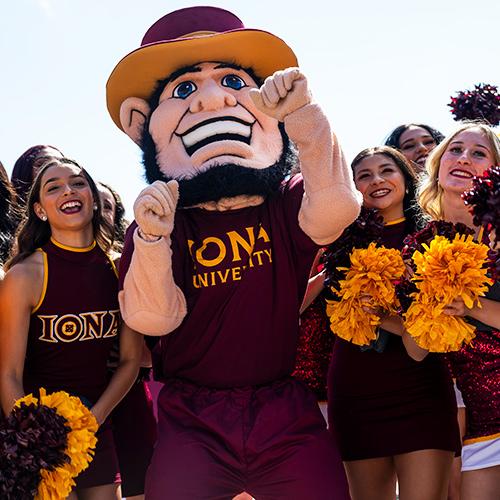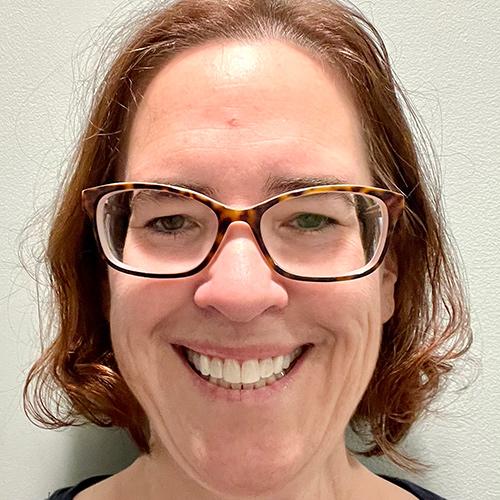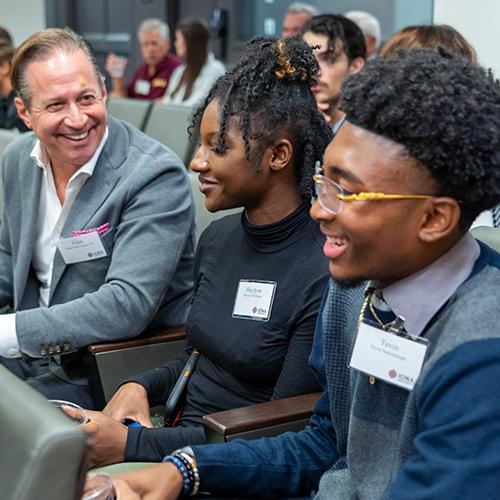IACD Featured Articles and Research
This article originally appeared in the January 2022 edition of The Communicator.
by Michelle Veyvoda, Ph.D. and Amanda Howerton-Fox, Ph.D.
It is well-documented in the literature that parents of deaf1 children in this country have difficulty finding speech-language pathologists and special instruction providers who can provide high-quality early intervention services that meet their children’s specific needs (Veyvoda et al., 2019; Cosby, 2009; Moseley et al., 1994). While hearing loss is a low incidence disability, the population of children who are deaf or hard of hearing is diverse and includes children with a range of types and severities of hearing loss, a variety of modes for communication (e.g., spoken language, sign language, cued speech), and deaf-disabled children, including those who are deafblind and those who use AAC devices. Throughout our years of graduate and doctoral study, and more recently in our clinical work and research, we have learned that traditional graduate training is not sufficient for students of speech-language pathology or special education to acquire the knowledge and skills needed to work with the deaf population. We have encountered families of children with hearing loss who have varying levels of knowledge about their children’s communication needs and have seen the devastating effects of language deprivation on too many deaf children who did not have access to language early enough in life.
Deafness is unique in its ability to potentially cut a child off from language. The term language deprivation has been increasingly used to describe the cognitive, social, and linguistic effects experienced by deaf children who do not have consistent and effortless access to language early in childhood (Hall, 2017; Hall et al., 2019; Howerton-Fox & Falk, 2019; Humphries et al., 2014). Many early childhood service providers focus on auditory deprivation, rather than language deprivation, as the cause of these delays and other lifelong effects (Hall, 2017; Hall et al., 2019). These providers advocate for an intervention course that prioritizes the development of auditory skills at the exclusion of visual communication, with the goal of the child learning spoken English on par with their hearing peers (ACIA, 2018; Hall, 2017; Hall et al., 2019). While many deaf children who are successful with their listening technology do achieve strong spoken language outcomes (Knoors & Marschark, 2012), others struggle to achieve developmental synchrony in spoken language and could benefit from a visually accessible mode of communication to stimulate their linguistic, cognitive, literacy and social development (Mayberry et al., 1991). Often, service providers don’t realize visual communication is necessary until a child is two or three years old, and by this time the critical period of language development has started to close (Mayberry et al., 2018). Research shows that deaf children who begin early intervention at six months of age achieve better language outcomes than children who begin later (Yoshinaga-Itano et al., 2010). Professionals who imply that parents must choose either a visual or a spoken language modality this early in their child’s life are offering parents a false and unnecessarily difficult choice at a time in their lives when they also may be adjusting to and grieving the knowledge that their child is deaf.
The debate between sign language proponents and spoken language advocates is centuries-long. More recently, however, the concept of “both/and” is gaining momentum. Prompted by growing research on the dangers of language deprivation, awareness that many hearing parents wish for their children to learn to communicate through spoken language, and the acknowledgement of the benefits bilingualism, some researchers and practitioners are calling for a new intervention paradigm that prioritizes a visually accessible and effortless first language while simultaneously prioritizing the auditory skills that are foundational to learning spoken language (Secora & Smith, 2021). Public policy advocates, such as the LEAD-K initiative, and research organizations, such as Gallaudet University’s VL2 Lab, have brought additional attention to language deprivation through their advocacy efforts and educational programming.
Through a “both/and” approach, service providers are able to offer unbiased information on language development and deprivation to parents, coach families to stimulate their deaf children’s language in accessible language modes, target language development goals and milestones in both signed and spoken modalities, and be on the look-out for signs of language deprivation. Practitioners with a “both/and” mindset can make appropriate and timely recommendations to families so that their deaf children do not go long periods of time without access to language. To address the need for more service providers who can serve deaf children and their families, and to increase the likelihood that early childhood services are delivered equitably and in an accessible manner to all families of deaf children, Iona University’s departments of Education and Communication Sciences and Disorders will launch the Interdisciplinary Advanced Certificate in Deafness (IACD) in the Summer of 2022.
Funded by a United States Department of Education Personnel Preparation grant (84.325K), Iona University has created the IACD to complement scholars’ graduate training in both programs. The program will train forty scholars, twenty from each program, over the course of five years. In addition to their respective Masters degree courses, which they will take simultaneously with the IACD, scholars will take coursework related to deafness as an interdisciplinary cohort. These courses include Pediatric Aural Rehabilitation, Foundations of Early Childhood Special Education, and American Sign Language. IACD scholars will also participate in two semesters of weekend seminars, the first focused on early language and literacy development and the second focused on special topics in deafness, including hearing aid and cochlear implant technology, listening and spoken language therapy techniques, cued speech, cultural humility, and working with deaf-disabled and deafblind children. During the program’s exit summer, scholars will complete clinical practicum experience at partner sites in interdisciplinary dyads. Additionally, all students will remain engaged with and supported by IACD peers, faculty and partners through a post-graduation mentorship program.
When designing the IACD, we knew that collaboration and partnership between our program and the community we seek to serve would be essential. We have assembled a multidisciplinary, multi-perspective team to serve as the program’s advisory board. Comprised of deaf and hearing individuals from fields such as psychology, audiology, speech-language pathology, sign language interpreting, and deaf education, and including representation from parents of children with hearing loss, the board will drive decisions that are aligned with the program’s vision and core values of empathy, equity, and family engagement. In a field that is often polarized, we are bringing together professionals and parents from multiple viewpoints and from settings that embrace different philosophies in the common pursuit of high quality, ethical services that prioritize the well-being of our most valued partners in the early intervention process: deaf children themselves. In addition, we are in the process of partnering with schools for the deaf, cochlear implant centers, center-based programs, and experts from other pre-professional training programs to build bridges, have courageous conversations, break the stigma associated with sign language, and train pre-professionals who will leave graduate study equipped with the knowledge and skills necessary to serve the diverse population of deaf, deafblind, deaf-disabled, and hard of hearing children.
The climate of deaf education and early childhood services for children with hearing loss has historically been polarized and contentious, and the biggest victims of that climate have been the deaf children who have experienced the devastating effects of language deprivation. Professionals and leaders in the fields of deaf education, speech-language pathology and audiology want deaf children to succeed but often disagree on what success looks like or what the path toward success should be. We are optimistic that the future of service delivery for deaf children and their families can look different, with professionals driven not by a particular philosophy, but by a moral obligation to create accessible, effortless language learning opportunities for their deaf clients and to coach their client’s families to do the same. Through an advanced certificate grounded in empathy, equity and engagement, we aim to graduate a new generation of service providers skilled in interdisciplinary work who will prioritize language access for their primary stakeholders: the deaf children with whom they work.
Throughout this paper, the term deaf to refer to children who are audiologically identified as deaf or hard of hearing, deafblind, or deaf-disabled.
References
American Cochlear Implant Alliance (2018). Position paper: Supporting parent choice for children who are deaf and hard of hearing. ACIA: McLean, VA.
Cosby, J. (2009). Pediatric cochlear implants: Knowledge and skills of speech-language clinicians. The ASHA Leader, 14(2), 6-18. doi: 10.1044/leader.FTR1.14022009.6
Hall, W. (2017). What you don’t know can hurt you: The risk of language deprivation by impairing sign language development in deaf children. Maternal and Child Health Journal, 21(5), 961-965. doi: 10.1007/s10995-017-2287-y
Hall, M.L., Hall, W. C. & Caselli, N.K. (2019). Deaf children need language, not (just) speech. First Language. 39 (4), 367-395. doi: 10.1177/0142723719834102
Howerton-Fox, A. & Falk, J. (2019). Deaf children as English language learners: The psycholinguistic turn in deaf education. Education Sciences, 9(2), 133-163. doi: 10.3390/educsci9020133
Humphries, T., Kushalnagar, P., Mathur, G., Napoli, D. J., Padden, C., & Rathmann, C. (2014). Ensuring language acquisition for deaf children: What linguists can do. Language, 90(2), e31-e52. doi: 10.1353/lan.2014.0036
Knoors, H., and Marschark, M. (2012). Language planning for the 21st century: Revisiting bilingual language policy for deaf children. Journal of Deaf Studies and Deaf Education, 17, 291–305. doi: 10.1093/deafed/ens018
Mayberry, R.I., and Eichen, E.B. (1991). The long-lasting advantage of learning sign language in childhood: Another look at the critical period for language acquisition. Journal of Memory and Language, 30, 486–512. doi: 10.1016/0749-596X(91)90018-F
Mayberry, R.I., and Kluender, R. (2018). Rethinking the critical period for language: New insights into an old question from American Sign Language. Bilingual Language and Cognition, 21, 886–905. doi:10.1017/S1366728917000724
Moseley, M. J., Mahshie, J. J., Brandt, F. D. & Fleming, L. F. (1994). A survey of professionals delivering speech-language services to children with hearing loss. Language, Speech and Hearing Services in Schools, 25, 100-104. doi: 10.1044/0161-1461.2502.100
Secora, K. & Smith, D. (2021). The benefit of the “and” for considerations of language modality for deaf and hard of hearing children. Perspectives, 6(2), 397-401. doi: 10.1044/2021_PERSP-20-00267
Veyvoda, M., Kretschmer, R., & Wang Y. (2019). Speech-language clinicians working with deaf children: A qualitative study in context. The Journal of Deaf Studies and Deaf Education, 24(3), 289-306. doi: 10.1093/deafed/enz008
Yoshinaga-Itano, C.; Baca, R.L.; Sedey, A.L. Describing the Trajectory of Language Development in the Presence of Severe-to-Profound Hearing Loss. Otol. Neurotol. 2010, 31, 1268–1274. doi: 10.1097/MAO.0b013e3181f1ce07.


